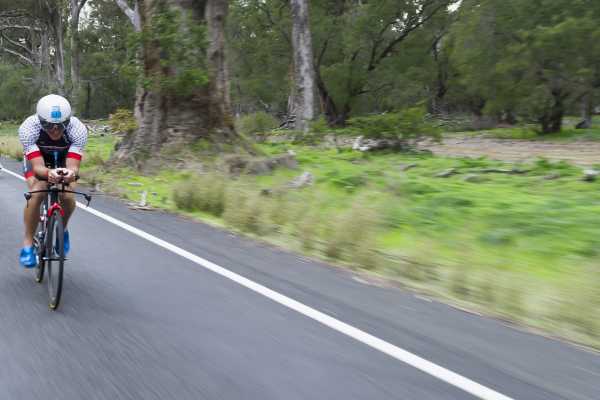Published on the 20/02/2017 | Written by Anthony Caruana

Communications systems key to keeping athletes safe sports…
Technology is changing more than business – it is having an increasingly significant role to play in enhancing the game for spectators and improving participant safety on the sportsfield. At the recent Ironman 70.3 held at Busselton in Western Australia, technology even took to the sky as aeroplanes were used to deploy communications infrastructure over the 113km (70.3 miles – now you know) course that athletes negotiated by swimming, cycling and running; no flying, yet, for Ironman participants.
Part of the course traversed forest areas where maintaining signal is difficult, potentially imperilling the racers.
Paul Groeneveld, operations manager for the event, said “We needed to make sure coverage extended over the whole course, even where the densely forested tuart [eucalypt forest] area affected coverage of the bike course.”
The solution used an elevated work platform, a 40-meter-high tower that delivers a large radio-frequency communications signal that works with a pair of repeaters to provide coverage to over 1000 radio users.
Those repeaters were placed in two aircraft. One plane acted as the primary repeater; when low on fuel, after about four hours of flying time, the second plane took over the communications task, allowing the first to top up its tanks.
As well as the communications infrastructure, the Ironman 70.3 used digital mobile and portable radios, providing communication for the events operation centre, traffic management teams, marshals and medical staff to contact each other.
Given the remote areas athletes were in, event organisers said this was crucial for incident management, and improved safety for athletes, staff and volunteers. In the final analysis, with a fixture which went swimmingly (and which was won by Australia’s Craig Alexander), the elaborate communications solution delivered the goods.
Other large sporting events have utilised novel approaches to communications to connect athletes with their support teams and emergency services in case something goes wrong and to deliver data to coaches and support crews.
At the Tour de France, Dimension Data fitted cyclists with a small transmitter that was used to create a mesh network. Data was transmitted from bike to bike, until it reached a support vehicle. From there, it was relayed to a helicopter which sent it to a “big data truck” where it was processed to give teams and fans access to real-time data.
Although the application of this technology for the Ironman 70.3 was important from an event management perspective, the potential applications are quite significant. With companies such as Catapult Sports making a big splash in the emerging world of sports analytics, it’s not enough to just collect data. Being able to collect it to make real-time decisions can deliver athletes a significant edge over their competition.



























